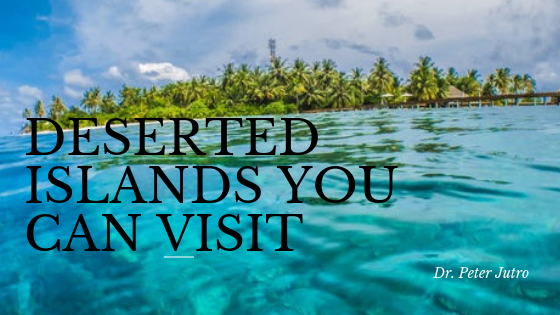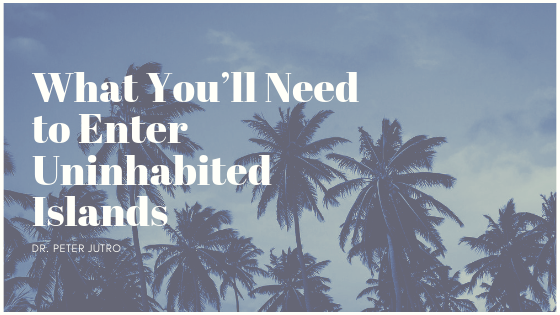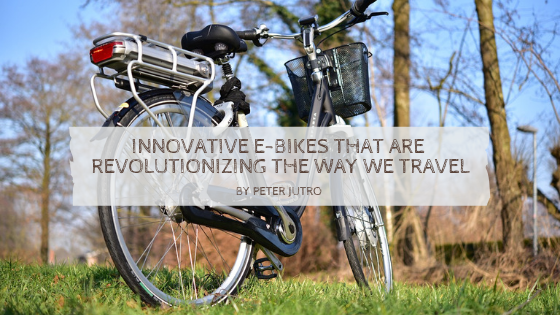
Deserted Islands You can Visit
Most of us have visited an island, perhaps Maui, Nantucket or even Long Island. Each has its own unique characteristics that make them fun to visit. They are heavily populated with a variety of structures. With all the activity, you wonder what it would have been like to be the first to explore one of them. To see them in their natural state. What if you could visit an uninhabited island today? Where you could disconnect from your devices and really let your imagination run wild? You could have fun exploring the island at your pace, and not worry about a tour guide. It can be a romantic getaway or a fun family vacation where everyone could be pirates for a day. Think they don’t exist? Think again. There are a number of islands around the world that offer access to tourists. Below are just a few to explore.
Owen Island, Cayman Islands — You’ll have to work to get to it, since it’s only reachable by kayak or rowboat from Little Cayman Island. It’s perfect for a day trip during your stay at Little Cayman. You can have a picnic while relaxing on your “private” beach or explore the fauna and flora.
Cocos Island, Costa Rica — Located off the coast of Costa Rica, Cocos Island is a scuba diver’s dream. Thought to once have been a hideout for pirates with buried treasure, this island is part of the National Park of Costa Rica and listed as a World Heritage Site by UNESCO. Those who visit enjoy the pelagic ocean life consisting of 30 types of coral, 60 types of crustaceans, 600 types of mollusks and over 300 types of fish. Jacques Cousteau visited the island in 1994, calling it the“most beautiful island in the world.” If you love nature, you won’t be disappointed. The island offers tropical wet forests that provide habitat for unique flora and fauna, including 74 species of ferns and 90 types of birds. Whether you want to explore the water or land, you’ll find something special.
Isle Royale, Michigan — It’s hard to imagine a deserted island in Michigan, but there is. It’s in Lake Superior as part of the U.S. National Park system. The Isle Royale National Park was established in 1931. The isle was used for commercial fishing and mining, and many of the fisheries were already built before the U.S. National Park Service took over the isle. The federal government was able to buy the properties at a low price by granting the fisherman life leases. When you visit, you can explore the mining sites, digging sites, and the old railroad. There are trails all over the isle, which were built to connect the mining locations. The island is closed to the public from November 1st through April 15th.

What You’ll Need to Enter Uninhabited Islands
Going on vacation to an island can be very exciting; it’s even more exciting when you are going to explore one that’s uninhabited. This type of island has few or no man-made structures, and is often part of a national park. Trips to them are considered a side activity while on a vacation on a neighboring island, for example, vacationing on Grand Cayman and visiting Owen Island in the Cayman Islands. You would still need to go through customs and immigration to get to the main island (or country). You must also have valid travel documents and any required vaccinations. To travel to a deserted island, you should:
Secure transportation — You will need to secure transportation to these islands via a small plane or boat. It can be arranged by the hotel you are staying or by the travel agency used to book the trip. Be aware that rates for seaplanes vary and the schedules can be unpredictable.
Bring Food — Many have lunch while relaxing on the beach. While some islands do not permit certain foods to be brought to the main island, the uninhabited ones have even more strict restrictions because they are home to various species or are used for farming (e.g. the Maldives). The food that is allowed would be from your hotel. That said, there are also strict cleanup regulations to keep the island pristine.
Check the Local Laws — Depending on the government that owns the uninhabited island, you will need to abide by the local laws, such as wearing the proper clothing (e.g. no bikinis in the Maldives), what areas are restricted (e.g. climbing Ball’s Pyramid) and what plants you can touch. The flora and fauna of these uninhabited islands are very delicate and are not to be trampled on or removed, so as not to disturb the habitat. Many of the popular islands do not permit travelers to bring live plants or plant cuttings for this very reason.
Visiting these islands is a wonderful opportunity to experience nature in its purest form. What you often don’t need anymore is a restricted area permit (RAP). RAPs were once required to visit 11 islands in the Andamans, an archipelago in the Bay of Bengal. The removal of the permit requirement by the Indian government was intended to boost tourism, and the threat to the Andaman habitats was deemed minimal.

Innovative E-Bikes That Are Revolutionizing The Way We Travel
If you’ve ever tried driving through the heart of Los Angeles, the Washington, DC area, or similarly congested places, you’re probably all-too familiar with the rage-inducing crawl of inner city traffic. Unfortunately for many, living and working in these areas means braving the bumper-to-bumper slog on a daily basis, especially since public transportation options in US cities can be inadequate. Bicycles have long served as an energy-efficient alternative to car travel in urban areas. Recent times, however, have seen a surge in the popularity of an updated take on the traditional bicycle.
Like their analog ancestors, electronic bikes, or e-bikes, allow riders to travel green and bypass heavy traffic, while also reaping the benefits of physical activity. But in addition to pedals, e-bikes come equipped with electric motors capable of maintaining speeds as high as 30 mph. While they’ve been a relatively common phenomenon in Europe for decades, US adoption of e-bikes has spiked only recently, with sales rising by 80% (260,000 units) between 2016 and 2017.
For those in the market for an e-bike–or those simply interested in learning more–here’s a summary of a few top brands’ innovative features and qualities.
Ecotric
Beachgoers looking to speed up travel on the sand might prefer Ecotric’s Fat Tire Beach Electric Bike. Outfitted with 4-inch tires, Ecotric’s bike is made for traversing a range of terrains, from sandy beaches and dirt trails to snow. The bike includes both pedal-assisted and fully motorized modes of travel, and has a max speed of 20 mph. In addition, Ecotric offers a 30-day home trial option, after which any unsatisfied customers can get a refund or exchange their bikes for another type.
Elby
Elby’s flagship 9-Speed Electric Bike is designed to embody “innovative style, comfort and power.” Many of its core features aim to compensate for the shortcomings of traditional bikes; it’s battery supports up to 80 miles of fully electric travel and it’s rear section includes storage racks for saddlebags. Other features of note include deflation-resistant tires, a high-intensity headlight, and Tektro hydraulic disk brakes.
Bintelli
A sixteen-year veteran of the powersports industry, Bintelli prides itself on incorporating extensive feedback from dealers in building a brand of e-bikes that “sets itself above the rest.” Bintelli bikes arrive 95% assembled, minimizing the potential for lost or missing parts. Bike variations include a three-wheeler with extra storage, an e-bike/scooter hybrid, and a folding bike for space-efficient storage.
As the future shifts toward energy efficiency, gas-guzzling cars may become increasingly impractical. By acquiring the right e-bike now, riders may be able to limit energy consumption, cut travel times, and, depending on local laws governing where e-bikes can be driven, sidestep the never-ending traffic jam that can characterize urban driving.
About Peter Jutro
Peter Jutro has a passion for travel and exploration, as well as cartography and the history of maps. Having traveled extensively over the past 50 years, Peter has had the opportunity to learn a great deal about people and the world as a whole. He is a firm believer in his wife Ellen’s adage that “the more you travel, the bigger the world gets.”
Whether traveling for business or pleasure, Peter Jutro is always excited about the opportunities that a new place and culture have to offer. Some of his fondest memories include his honeymoon in Switzerland, a country that has felt like a second home to his family, as well as a research trip to Central Siberia where he had the exciting opportunity to work with the Russians on environmental issues.
An intently curious individual, Peter Jutro is continually looking to explore what exists around the world. While he may be learning about a culture’s history, studying its environmental concerns, or he and his wife might be hiking and scuba diving in one of a number of countries for pleasure, Peter always appreciates how travel serves as a catalyst for education, personal growth, and developing friendships.
Biodiversity In The Florida Keys
Peter Jutro is currently in the process of writing a book about Lignumvitae Key, an island in the Florida Keys. He has been involved in research and in the preservation of this area since the early 1970’s. Dr. Jutro finds it an incredibly fascinating place for historical, political, and biological reasons. The Lignumvitae Key Aquatic Preserve encompasses 7,000 acres of seagrass meadows, deep water channels, hard bottom communities, and mangrove wetlands. The island itself includes the last pristine lowland tropical forest remaining in the United States.
Berlin: A Family Connection
Of German-Jewish descent, Peter Jutro has an extremely personal connection to Berlin, the city from which his family emigrated to the United States. Just prior to World War II, his late father spent several months as a concentration camp prisoner in a Berlin suburb. Recently, Peter was excited to find a journal among his family’s historical documents; This journal had been written in by his father in 1939, and detailed life in the concentration camp. This inside look at the concentration camp, as well as the close personal connection with the author, makes this find a unique historical document. Peter is currently in the process of transcribing and translating the manuscript into English so that his father’s experiences can be broadly shared.
Professional Background
Peter Jutro dedicated more than 35 years to Federal service, serving in a variety of positions involved with Environmental Policy and National Security. Most recently, Dr. Jutro was Acting Associate EPA Administrator for Homeland Security. Before that, he was Deputy Director for Science and Policy and Director of the Washington office of EPA’s National Homeland Security Research Center. This group is responsible for the research needed to provide the science and technology behind the EPA’s disaster mandates, which fall primarily in the areas of decontamination, water protection, risk assessment, and resilience. His earlier work in academia, on Congressional Staff, and with Federal Agencies, dealt largely with risk assessment, global climate change and biological diversity.
